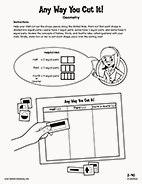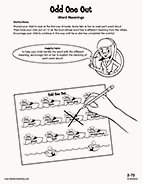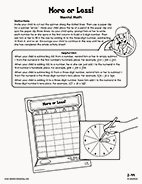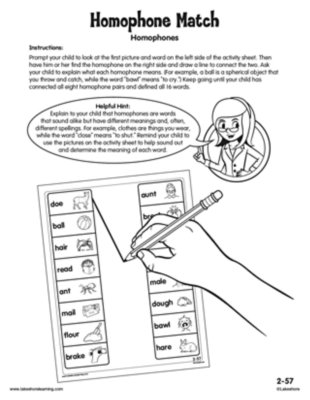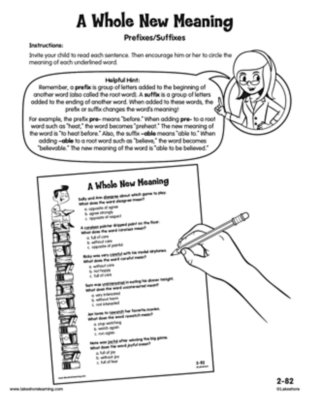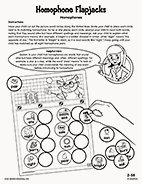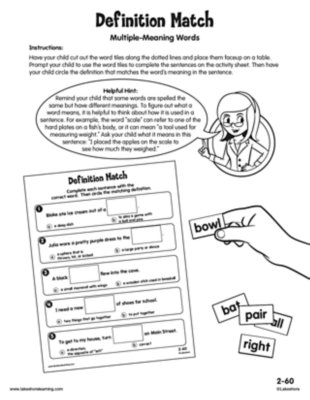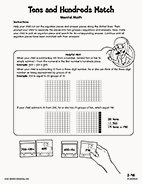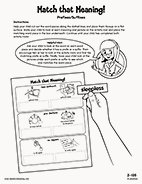Narrow by Grade
- Infant (0)
- Toddler (0)
- Preschool (0)
- Pre-K (0)
- Kindergarten (0)
- 1st (0)
- 2nd (10)
- 3rd (0)
- 4th (0)
- 5th (0)
- 6th & Up (0)
Grade
Narrow by Age
- 0-18m (0)
- 18-36m (0)
- 3 yrs. (0)
- 4 yrs. (0)
- 5 yrs. (4)
- 6 yrs. (7)
- 7 yrs. (10)
- 8 yrs. (10)
- 9 yrs. (10)
- 10 yrs. (8)
- 11 yrs. & Up (0)
Age 7 yrs.
10 results for "brights 4 ever cut outs"
During second grade, your child will learn to recognize shapes and identify their attributes, such as how many sides, angles or vertices (corners) they have. Your child will also learn to divide circles and rectangles into halves, thirds and fourths.
View worksheetDuring second grade, your child will learn to determine the meanings of grade-appropriate words based on the context in which they are used.
View worksheetWhen entering second grade, your child should be able to figure out the correct meanings of multiple-meaning words, such as knowing when the word “bat” refers to a baseball bat or a flying animal.
View worksheetDuring second grade, your child will learn to mentally subtract multiples of 10 from three-digit numbers without having to write down the problems and work them out. For example, 800 — 10 = 790.
View worksheetWhen entering second grade, your child should be able to figure out the correct meanings of grade-appropriate homophones—words that sound the same but have different meaningss. For example, “to” and “two” or “eye” and “I.”
View worksheetDuring second grade, your child will learn to figure out the meaning of a word when a prefix or suffix is added to a familiar root word, such as figuring out the meaning of “unhappy” based on the knowledge that “un-” means “not.”
View worksheetWhen entering second grade, your child should be able to figure out the correct meanings of grade-appropriate homophones—words that sound the same but have different meaningss. For example, “to” and “two” or “eye” and “I.”
View worksheetWhen entering second grade, your child should be able to figure out the correct meanings of multiple-meaning words, such as knowing when the word “bat” refers to a baseball bat or a flying animal.
View worksheetDuring second grade, your child will learn to mentally subtract multiples of 10 from three-digit numbers without having to write down the problems and work them out. For example, 800 — 10 = 790.
View worksheetDuring second grade, your child will learn to figure out the meaning of a word when a prefix or suffix is added to a familiar root word, such as figuring out the meaning of “unhappy” based on the knowledge that “un-” means “not.”
View worksheet